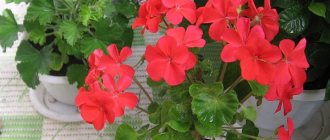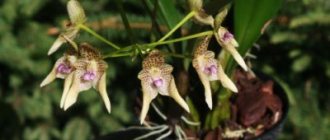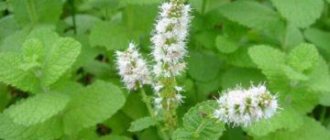Features of Dutch roses
This group of colors includes completely different specimens, each of which is good in its own way. Breeders are trying and developing more and more new varieties, even more beautiful and original.
Dutch roses are grown for cutting
Advantages and disadvantages of Dutch roses:
| Advantages | Flaws |
| appearance; | do not tolerate transportation well; |
| bright, delicate aroma; | not the largest flower size compared to some other roses. |
| look great both individually and in bouquets; | |
| Ideal for wedding bouquets and special occasion decorations; | |
| uniqueness and diversity of species; | |
| unusual colors. |
Chiri
A unique Dutch variety that differs from others in the large number of petals in the bud. If in other varieties this figure is 35-40, sometimes up to 50, then Chiri can have 60-80 petals. Its bud is incredibly full, at the moment of opening the diameter is 14 cm.
The coloring is deep crimson. The aroma contains noticeable honey and fruit notes that fill the garden. It grows almost the entire season, as it sets buds from spring until frost. Winter hardiness is average: Chiri can withstand -10°C frost, but extreme cold can be detrimental to it.
Related article:
5 most common reasons why rose leaves may turn yellow and fall off
Application in landscape design
Landscape designers admire Dutch roses and actively use them to create original compositions. Conifers, such as blue spruce, look great between rose bushes. Moreover, the needles are useful for diluting the soil in which these flowers grow.
Continuously blooming roses - the most beautiful varieties
Roses are also often combined with small flowers in blue or purple. Popular wildflowers - cornflowers or bluebells - are perfect for such mixes.
Note! In Russia, these roses are almost never used to decorate urban and park areas, since they are not easy to care for. But they are often used to decorate the territories of country houses, mansions, and residences.
Dutch roses in landscape design
Variety of choices
Dutch chickens
There are many varieties of Dutch roses. If you have no experience in growing and maintaining roses, it is recommended to start with less demanding varieties. But even unpretentious roses require quite careful care.
Growing rose bushes is not only a visually beautiful and well-groomed area, but also a fairly profitable business if the correct agricultural techniques for growing and caring for these demanding plants are followed.
0 0 votes
Article rating
The best varieties of Dutch varieties
Among all the roses from Holland, it is difficult to single out the most beautiful ones, since they are all magnificent in their own way. However, there are the most popular ones, already time-tested.
Grand Prix (Rose Grand Prix)
David Austin roses - the most popular varieties
Description of the flower:
- the Grand Prix variety belongs to the hybrid tea varieties;
- the height of the bush reaches 1.5 m, while the height of the stem is not lower than 70 cm, maybe about 120 cm;
- classic flower shape, diameter about 12 cm;
- burgundy petals;
- The aroma is delicate and lasts a long time.
For your information! This variety is grown primarily for sale due to not only its external characteristics, but also its high transportability. Also, the Grand Prix is able to maintain its commercial appearance for a long time.
Freedom
Variety characteristics:
- belongs to the hybrid tea group;
- the color is bright scarlet with a velvety tint;
- flower diameter can reach 15 cm;
- the bush grows up to 2 m in height, bushes well, the stem is long.
This variety tolerates cold well and prefers growing in shaded areas. Has an external resemblance to the Madame Red variety.
Hybrid tea variety Mohana
Description of the Mohana variety:
- compact bush, the height of which reaches no more than 60 cm;
- there are many dark green leaves, but few thorns on the stems;
- the petals are yellow, they have pointed edges of a reddish color;
- the buds are large and cone-shaped;
- pleasant, soft, persistent aroma.
Note! This variety is grown for cutting, as they are great for creating bouquets and flower arrangements. The main advantages of the variety are its unpretentiousness to weather conditions and good immunity to most common diseases.
High Magic
External characteristics of the flower:
- the color is a combination of yellow and red shades, they look like flames;
- the leaves are dark green, there are no thorns at all;
- height is slightly more than a meter;
- Only 1 flower appears on each shoot, and inflorescences are formed only occasionally.
For your information! Unlike most flowers in this group, this variety has virtually no scent.
The High Magic variety has almost no smell
Elite variety Vendela
This elite variety is also included in the hybrid tea group. Flowers are often used to make bridal bouquets due to their colors. They are cream, almost white, up to 1 m high.
Vendela variety
Lovely Lidia
Lovely Lydia is a variety belonging to a bush variety of spray roses, which appeared not so long ago, but is quickly gaining popularity. These are compact bush flowers, the height of which does not exceed 70 cm, the width of the bush is no more than half a meter. The flowers are small, maximum 4 cm in diameter. The color is bright pink or crimson. The core is darker than the main part of the flower. The flowering period is quite long. The conditions it requires are quite simple to comply with.
Lovely Lydia
Avalanche
Avalanche is a white hybrid tea rose with a light greenish tint. The buds are quite large and have a classic shape. The height reaches 1 m. The leaves are classic green.
Penny Lane
Penny Lane is a climbing Dutch rose. The flowers are cup-shaped and large in size. The color is initially creamy, becoming more pronounced a few days after the start of flowering.
Important! The variety is characterized by high immunity and resistance to frost.
El Toro
Brief description of El Toro:
- belongs to the hybrid tea group;
- the color is bright red, close to scarlet;
- bud diameter up to 12 cm;
- bush height is about 80 cm;
- There are a lot of bright green leaves on the stems.
This rose has high immunity to diseases and good tolerance to low temperatures.
Ilios
The Ilios variety has the following characteristics:
- semi-double cup type;
- minimum height 70 cm;
- green leaves with a glossy sheen;
- The color of the buds is bright yellow.
Ilios
Chiri
This variety is characterized by a beautiful burgundy-raspberry color. The bud opens up to 14 cm. The height of the bush reaches 70 cm. The leaves have a peculiar interesting coloring - dark green with burgundy pointed tips. This flower does not tolerate cold weather well.
The Grand Prix
A classic representative of the Dutch group: the peduncle is very tall and powerful, the bud is of a standard goblet shape. The burgundy coloring is always in fashion, and the petals contrast with the bright green foliage. The bush is tall and spreading, it has to be tied up so that it maintains its shape.
Once cut, Grand Prix roses last in a vase for a very long time, emitting a pleasant pink aroma. This draws the attention of the variety not only to ordinary gardeners, but also to those who grow roses for sale.
How to grow Dutch roses: planting features
To grow Dutch roses, you can use one of two methods: purchasing a ready-made seedling from a flower shop or special nursery, or by cuttings. The first method is more successful, but at the same time more expensive. This way, the roses will quickly take root and delight the gardener with their gorgeous blooms.
Small garden roses - popular varieties
Planting cuttings may be a less productive and longer-lasting option, but it is also used quite often. Especially those who regularly breed and plant roses.
Important! Planting is carried out only in the spring, since over the summer the roses will have time to gain strength and adapt to the site, as well as prepare for the winter cold.
High Magic
A variety with interesting colors: each petal is yellow closer to the base and red towards the outer edge. Most often one bud develops on a peduncle, but clusters of 3-4 flowers can be formed. Then the petals are smaller in size.
Gardeners often choose this particular variety because it has the highest winter hardiness among all Dutch roses. In addition, High Magic is resistant to specific diseases.
Important! Mistakes when growing roses
Care requirements
Since the variety of varieties of Dutch roses is very large, new ones are constantly appearing, it is difficult to provide a care regimen that will work for absolutely all varieties. But there are a number of general rules that should be followed.
Watering rules and humidity
Moistening the soil should be carried out regularly in the early morning or evening. Watering is done strictly at the root to prevent drops of moisture from reaching other parts of the plant. The water should be soft, well-settled at room temperature.
Fertilizing and soil quality
Almost any soil will do to grow Dutch roses. It must be nutritious, sufficiently loose, moisture- and breathable with good drainage. The most optimal substrate is considered to be one consisting of:
- garden land - 60%;
- peat - 25%;
- compost - 15%.
Feeding is carried out regularly from the beginning of the growing season. Fertilizers are applied once every 10 days. It is better to use ready-made complex solutions for roses. It is worth alternating mineral and organic fertilizers.
Note! During the flowering period, you should make sure that fertilizers do not contain nitrogen, which will promote the growth of green mass, but have a negative effect on buds and flowers.
Pruning and replanting
Pruning is done in early spring before the beginning of the growing season and in late autumn while preparing roses for winter. You should not carry out drastic pruning if it is not necessary. It is enough to simply remove old, dried, damaged branches. Using this procedure, the desired shape of the crown of the rose bush is formed.
Transplantation from place to place is carried out only in the spring, if necessary. The bush is carefully dug up and pulled out along with the earthen lump so as not to damage the delicate roots. After this, it is carefully transferred to the prepared planting hole to the place where it will now grow.
Features of wintering Dutch varieties
The best wintering option for Dutch rose varieties is a greenhouse. If it is possible to put them in a greenhouse for the winter, you should definitely do so. If this is not possible, then covering with a special material is required to protect the roses from winter frosts (there are different options for every taste and budget) and natural insulation - spruce branches or leaves. If a florist uses other methods on his farm, they will also be suitable, the main thing is the result. Roses need to be warm in winter.
Sheltering roses for the winter
Growing conditions
If you decide to grow roses on your site, it is very important to consider some important points
Site selection
Rose loves warmth and sunlight, so choose a well-lit area for planting. You cannot plant a flower in the shade, but the sun's rays should not illuminate the bush all day - it will be enough if the rose receives sunlight before lunch. It is also recommended to choose a windless location. Did you know? The cost of natural rose oil is higher than the cost of gold and platinum. To produce 1 kg of oil, it is necessary to process 3 tons of petals.
Roses will grow better if they are planted away from trees - this way the bush will get more moisture and nutrients.
Soil requirements
In general, roses can grow in any soil, but if you want to end up with beautiful and healthy flowers, it is recommended to add compost or ash to the soil before planting. Also, after the bushes have become stronger, it is recommended to apply mineral fertilizers, but you should not use large amounts of chemicals.
Propagation of Dutch roses
Dutch roses are propagated exclusively by cuttings. Instructions for the procedure:
- Choose the right cuttings. It must have at least 3 buds. It is cut from the top side at an acute angle, from the bottom - evenly.
- The leaves on it need to be cut in half, and the lowest one should be cut off completely.
- It is best to plant cuttings in a greenhouse. There they are immediately planted in open ground, periodically moistening the soil.
- If the propagation procedure is carried out at home, you must first place the cuttings in a root growth accelerator solution in a warm, bright place. Additional lighting will increase the speed of root formation.
- In a month and a half, thickenings will become visible on the cuttings - the rudiments of the root system. This is a sign that you can plant them in separate pots.
- The seedling can be moved into open ground after another couple of months. The hole in which it will be placed initially should be filled with a mixture of earth, sand and humus (2:1:1).
Note! Growing a new plant from flowers presented in a bouquet will be quite problematic, since they are treated with chemicals and have practically lost the ability to germinate.
Pest and disease control
All varieties of Dutch roses have high immunity to diseases and pests. Most often, the problem arises either due to improper care (most often), or because neighboring plants are sick. This must be carefully monitored and, at the slightest sign of illness, treatment must be started using special means. Spring treatment with various preparations against pests and viral diseases and autumn digging of the soil around the flower, which will help cope with some insects, are also important.
If there are no problems, as a preventative measure you can use folk methods, such as treating the stems and leaves with a soap solution (from laundry, not cosmetic soap) or sprinkling the plant with mustard powder.
Dutch roses are one of the most beautiful and tall varieties of flowers. Every woman dreams of receiving a chic bouquet of these delightfully fragrant buds as a gift. You can grow them yourself in your summer cottage, delighting yourself, your family and neighbors with their amazing appearance and unusual bright colors.











